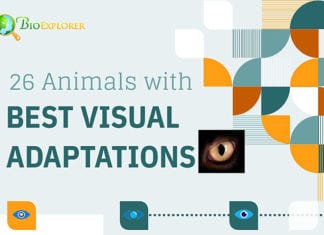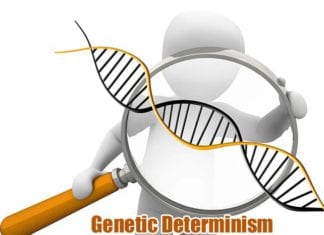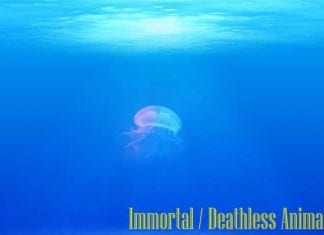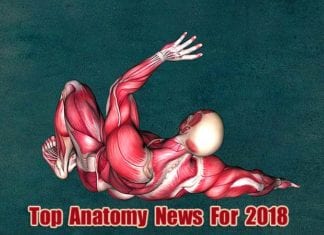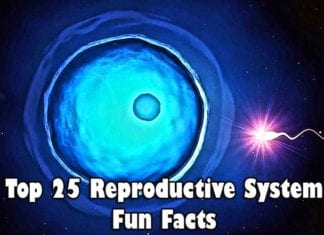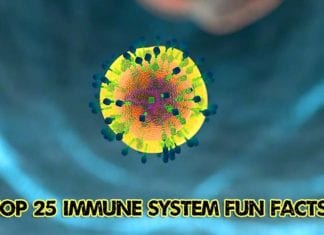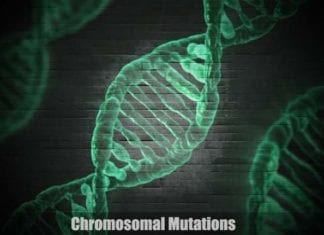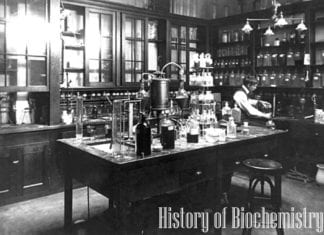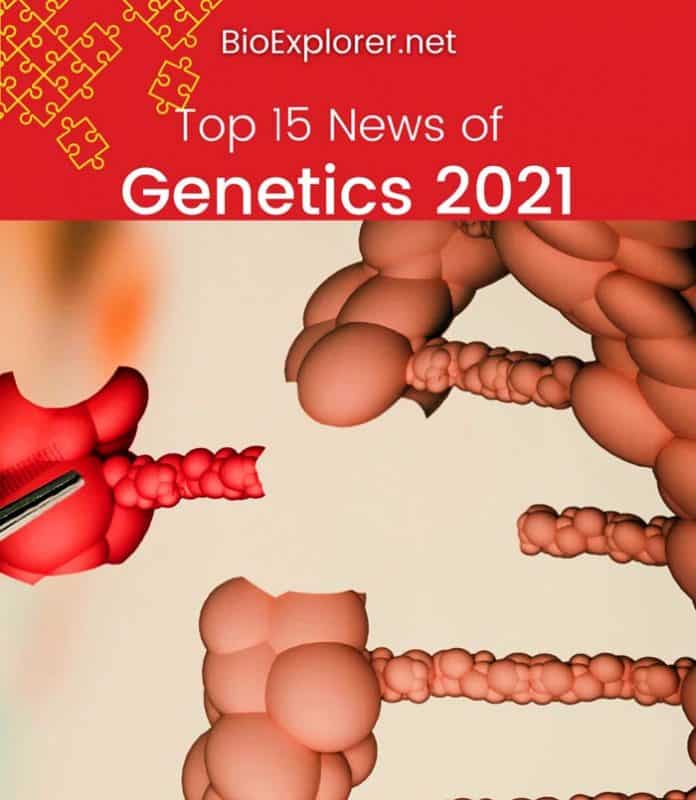
The latest developments in genetics in 2021 have uncovered some remarkable findings and innovations. These discoveries shed light on the genetic basis of several diseases and illnesses, such as schizophrenia, aortic aneurysms, liver cancer, and other lifestyle diseases.
The research also explores the genetic basis of embryonic stem cell development and the therapeutic application of genetic approaches for target specificity. Additionally, scientists have made significant strides in genetics by discovering new nucleobases. The discovery of these new nucleobases could have profound implications for genetic research and pave the way for new avenues of exploration. Overall, these breakthroughs demonstrate the potential of genetics to transform the future of medicine and scientific research.
Table of Contents
- Top 15 Genetics News of 2021
- 1. Study indicates that the genetics of eye color is not straightforward (UK, Jan 2021)
- 2. Researchers identify 14 genes that contribute to obesity (USA, Oct 2021)
- 3. In patients with severe schizophrenia, researchers discover genetic variations linked to rare diseases (USA, Dec 2021)
- 4. Researchers present new ideas for extending life expectancy simply by controlling the activity of a protein (South Korea, Nov 2021)
- 5. Core genomic networks influencing human embryonic stem cell activity have been identified by researchers (USA, Oct 2021)
- 6. New artificial genomic DNA can reproduce and evolve outside of cells, according to research (Japan, Nov 2021)
- 7. Researchers reveal genetic hints behind aortic aneurysms (USA, July 2021)
- Top 26 Anatomy & Physiology News in 2018
- 8. Scientists discover new gene variations linked to pregnancy-related hypertension (UK, Aug 2021)
- 9. Genes have been discovered that might raise the risk of obesity but also provide protection from diseases (Denmark, Feb 2021)
- 10. A new scientific study will assist in determining the genetic causes of type 2 diabetes(USA, Oct 2021)
- 11. Researchers find potential medications for COVID-19 early treatment using genetics (USA, April 2021)
- Top 25 BEST Respiratory System Fun Facts
- 12. Researchers discover how genetic variations affect the control of blood cells’ genes (Germany, Sep 2021)
- Overview of Chromosomal Mutations, Types & Examples
- 13. Geneticists found a new DNA nucleobase biosynthesis pathway (France, May 2021)
- 14. A study identifies genetic differences in COVID-19 and pneumonia risk (USA, Jan 2021)
- Top 14 Most Infectious and Deadliest Diseases Caused By Bacteria
- 15. New therapeutic target is discovered via genetic research on liver cancer (USA, June 2021)
Top 15 Genetics News of 2021
Let’s glimpse research findings in Genetics for 2021 with broader perspectives.
1. Study indicates that the genetics of eye color is not straightforward (UK, Jan 2021)

In the largest genetic study of its kind to date, a group of scientists from King’s College London and Erasmus University Medical Center Rotterdam has discovered 50 new genes that play a vital role in determining eye color.
- This study expands on earlier research, which found 12 genes associated with eye color but predicted there to be many more.
- Before recent discoveries, scientists believed that only one or two genes were responsible for the variance in eye color, with brown eyes predominating over blue eyes.
- The researchers also discovered that Europeans with eyes ranging from dark brown to pale blue and Asians with eyes in various shades of brown are genetically related.
- The results are noteworthy because they get us one step closer to deciphering the genes responsible for one of the most distinctive aspects of the human face, which has confounded generations throughout history.
This research gives us the genetic information we need to forecast eye color from DNA accurately. It will also help us better understand eye illnesses like pigmentary glaucoma and ocular albinism, where eye pigment levels are important.
Suggested Reading:
Top 26 BEST Animals With Best Eyesight
![]()
2. Researchers identify 14 genes that contribute to obesity (USA, Oct 2021)

Numerous genes connected to obesity have been discovered by genomicists. This indicates that those with obesity have a higher or lower prevalence of the genes than those with a healthy weight. Finding the genes that directly contribute to or help prevent weight gain presents a problem.
- The researchers used lowly C. elegans worms. These little worms love to live among decaying foliage and eat microorganisms. However, they have more than 70% of our genes, and much like people; they get obese if given a diet high in sugar.
- To identify which of the 293 genes was truly causing or preventing obesity, researchers employed worms to screen the 293 genes related to obesity in people.
- They achieved this by creating an obesity-related worm model and feeding some worms a conventional diet and others a high-fructose diet. They uncovered 14 genes that cause obesity and three genes that help prevent it using this obesity model in conjunction with automation and supervised machine learning-assisted testing.
- Scientists discovered that inhibiting the three genes that kept the worms from gaining weight also extended their lifespan and improved their neuro-locomotor performance.
To lessen the impact of obesity on patients and the healthcare system, anti-obesity medicines are urgently needed. The results open the door for medicines against a health issue more than 40% of Americans experience.
Suggested Reading:
What is Genetic Determinism?
![]()
3. In patients with severe schizophrenia, researchers discover genetic variations linked to rare diseases (USA, Dec 2021)
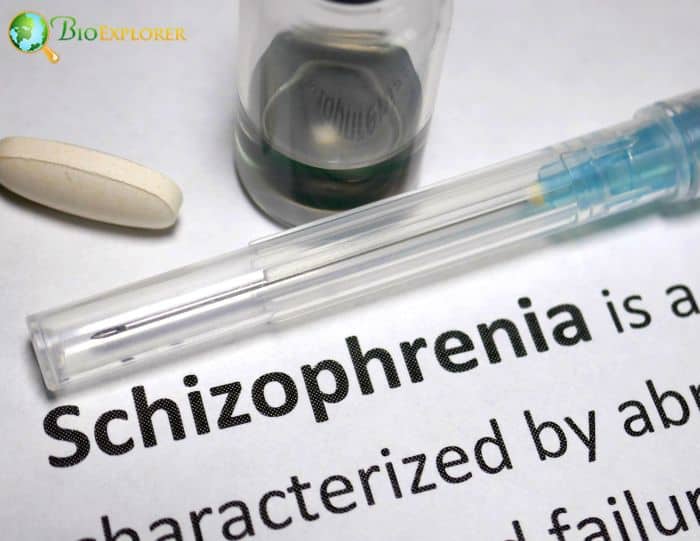
According to recent studies, studying genetic mutations in people with severe schizophrenia can help researchers better identify rare genetic variants connected to the disease.
- Patients with schizophrenia display a wide range of palpable symptoms. Therefore, from the extreme end of the scale, a group of 112 patients with severe, severely treatment-resistant schizophrenia who needed prolonged hospitalization was chosen for this study.
- The team’s investigation focused on a group of “intolerant” genes, which are seldom mutated in the healthy general population. They carried out genomic sequencing and looked at the influence of uncommon, harmful mutations on gene function.
- The patients were divided into three groups: those with severe schizophrenia, those with typical schizophrenia, and a control group of healthy persons.
- Compared to about 30% of people with typical schizophrenia and 25% of the control group, more than 48% of people with very treatment-resistant schizophrenia carried at least one of the rare, harmful variations.
- Compared to the group with typical schizophrenia, the severe schizophrenia group also had a higher variation burden in genes previously linked to the disorder.
Finding uncommon variant risk factors in people with severe schizophrenia may help researchers better understand treatment resistance and prognosis. It may also open up new options for genetic counseling for families affected by the illness.
Suggested Reading:
Top 12 Genetics News In 2017
![]()
4. Researchers present new ideas for extending life expectancy simply by controlling the activity of a protein (South Korea, Nov 2021)

By simply controlling the function of a protein, researchers have provided new insights into how to extend life expectancy. For example, a single amino acid alteration in the tumor suppressor protein phosphatase and tensin homolog (PTEN) has been found to lengthen healthy times while preserving longevity significantly.
- One of the evolutionarily conserved aging-modulatory pathways, insulin and insulin-like growth factor-1 (IGF-1) signaling (IIS), is found in organisms ranging in size from microscopic roundworms to humans.
- Animals live longer when IIS is properly reduced; however, this process frequently results in problems in various physiological indicators, including slowed development, reproduction, and motility. The study team discovered that a particular amino acid modification in the PTEN protein enhances health while preserving the longevity provided by a decreased IIS.
- They took advantage of the superior model organism, the roundworm C. elegans. The phosphatase PTEN protein eliminates phosphate from both lipids and proteins.
- By keeping some of the protein phosphatase activity active while decreasing lipid phosphatase activity, the newly discovered amino acid alteration sensitively re-calibrated the IIS.
- As a result, the PTEN protein’s amino acid shift preserved the transcription factor Forkhead Box O (FOXO) activity, which promotes longevity while limiting the unfavorable overexpression of another transcription factor, NRF2. As a result, mice with lower IIS lived long and healthy lives.
By slightly altering the activity of one protein, PTEN, the work presents the intriguing possibility of concurrently enhancing longevity and health in people.
Suggested Reading:
16 Immortal Animals Who Defy Death
![]()
5. Core genomic networks influencing human embryonic stem cell activity have been identified by researchers (USA, Oct 2021)

Researchers have identified key networks that simultaneously regulate pluripotency and cell death readiness (apoptosis), helping provide the ideal environment for embryonic development.
- Nearly every gene in the human genome was assembled into an “atlas” by the researchers to study the effects of over- or under-expression on the fundamental stages of human development.
- Thousands of genetic changes were examined simultaneously to learn how they impact embryonic stem cell proliferation and the formation of the three germ layers that provide the building blocks for human tissues.
- The stem cells‘ resistance to death unexpectedly increased when the researchers removed these well-known genes, including OCT4 and SOX2. This result suggests that, under normal circumstances, pluripotency regulators also contribute to apoptotic pathways.
- The scientists proposed that the genetic association between pluripotency and carefully controlled cell death ensures that defective stem cells are eliminated early in embryonic development.
- These interconnected behaviors were particularly noticeable in the SAGA complex, a pluripotency regulator. The researchers found that hESCs died less frequently when the SAGA complex wasn’t present.
- The absence of it prevented the growth of the endoderm, mesoderm, and ectoderm, demonstrating the SAGA complex’s crucial function in various hESC functions.
- Finally, the researchers found that many genes that control the development of the three germ layers are also known to promote the development of malignancies in somatic cells, whether over or under-expressed.
This provides a chance to investigate genetic networks’ role in cellular functions like growth, differentiation, and survival. In addition, this strategy can assist biologists in comprehensively mapping the genetic networks involved in the development of certain tissues and in manipulating those genes to generate various human tissue types from stem cells effectively.
Suggested Reading:
Top 17 Stem Cell Research Pros and Cons
![]()
6. New artificial genomic DNA can reproduce and evolve outside of cells, according to research (Japan, Nov 2021)

For the first time, using only cell-free materials, scientists successfully stimulated gene expression from DNA and evolution by continuous replication extracellularly. Furthermore, it may create artificial cells that can grow independently by including the genes required for transcription and translation in the synthetic genomic DNA.
- Scientists successfully translated the genes into proteins using circular DNA bearing the two genes required for DNA replication (artificial genomic DNA) and a cell-free transcription-translation machinery. Then, they replicated the original circular DNA with the translated proteins.
- By extending this DNA replication cycle for roughly 60 days, they were also able to successfully improve the DNA, resulting in a DNA with an improvement in replication efficiency of 10 times.
- The group’s artificial genomic DNA could create artificial cells that grow independently by feeding them low-molecular-weight substances like amino acids and Nucleotides.
- This could be accomplished by adding the genes required for transcription and translation to the artificial genomic DNA.
We anticipate that beneficial substances currently produced utilizing living organisms (such as substances for medicine development and food production) will become more stable and manageable if such artificial cells can be made.
![]()
7. Researchers reveal genetic hints behind aortic aneurysms (USA, July 2021)

Researchers found a new mutation in the genetic coding of a transcription factor after nearly the whole human genome was examined for genetic variations that raise the risk of an aneurysm.
- In collaboration with the Cardiovascular Health Improvement Project and the Michigan Genomics Initiative at the University of Michigan, researchers analyzed blood samples from more than 1,300 patients with thoracic aortic aneurysms with more than 18,000 control samples.
- The researchers uncovered a novel variation in the genetic coding of a transcription factor, which means it affects many other genes after virtually the whole human genome was examined for genetic changes that raise the risk of an aneurysm.
- Researchers looked at how this gene affected the smooth muscle cells that comprise the aorta and found that the transcription factor they had previously identified as crucial for telling cells when to regenerate and when to die.
Further research may determine whether aortic aneurysm apoptosis or cellular death may be slowed down to lessen the chance of aortic dissection or rupture.
Suggested Reading:
Top 26 Anatomy & Physiology News in 2018
![]()

Scientists from the Queen Mary University of London and St. Bartholomew’s Hospital have led an international investigation that identified a particular pair of gene variations that produce unexpectedly high blood pressure in pregnant women.
- Aldosterone causes the kidneys to retain salt, raising blood pressure. These researchers’ most recent research reveals a novel form of primary aldosteronism brought on by the coincidence of a special pair of new variations that always occur together.
- Most of the patients are female and appear in the first trimester of pregnancy with rapid onset hypertension and low blood potassium levels.
- The novel variations were discovered to activate an aldosterone-producing receptor molecule in the adrenal cells that recognize the hormone Human Chorionic Gonadotropin (HCG), which is detected in standard pregnancy tests.
Knowing the source of a pregnant woman’s hypertension will help her have a healthy pregnancy. Following the treatment to remove the adrenal nodule, they will be fully free of hypertension.
Suggested Reading:
Top 25 Reproductive System Fun Facts
![]()
9. Genes have been discovered that might raise the risk of obesity but also provide protection from diseases (Denmark, Feb 2021)

Researchers have discovered 62 genes that increase body fat levels while lowering the risk of metabolic and cardiovascular disorders. These genes may contribute to healthy body fat and provide a novel treatment route for diabetes and heart disease preventative medications.
- By examining data from tens of thousands of patients with body fat and illness risk factors evaluated, the researchers discovered their discovery.
- They discovered 62 genomic regions substantially linked to high body fat levels and a lower risk of cardiometabolic illnesses.
- Additional research revealed that the genes were involved in several bodily processes, including inflammation, creating and regulating fat cells, distributing body fat, and controlling energy.
- Instead of the known obesity genes associated with the central nervous system, which affect satiety and are often linked to unhealthy obesity, the data-driven strategy used in this study allowed the researchers to discover additional genes associated with healthy fat tissue.
The research provides new insight into the biology that could explain why larger body fat levels are not necessarily associated with higher risks for diabetes and heart disease. As a result, we will eventually be able to diagnose and treat obese patients more effectively once we better understand the genes that shield people from acquiring diabetes and cardiovascular disease.
Suggested Reading:
Top 25 Circulatory System Fun Facts
![]()
10. A new scientific study will assist in determining the genetic causes of type 2 diabetes(USA, Oct 2021)

Numerous variations in the human genome have been related to type 2 diabetes. However, how they can cause the condition is unclear since most do not reside in genes that code for proteins. Thus, the researchers have created a tool for examining how genetic variations in the cells that cause type 2 diabetes may contribute to the condition.
- More than 500 human islet samples from patients with and without type 2 diabetes were gathered by researchers, who used these samples to extract genomic and gene expression data to build what they called tiger (for Translational human pancreatic Islet Genotype Tissue-Expression Resource).
- According to TIGER analysis, specific genetic variations in the islets of type 2 diabetes patients regulate the expression of specific genes. In addition, 32 new genes that may increase the risk of type 2 diabetes have been discovered.
- Through the TIGER web platform, the diabetes research community can access the publically available TIGER data.
This tool will be very helpful in locating genes that might be connected to the genetic variations linked to type 2 diabetes that we have discovered. The first step in discovering prospective therapeutic targets or better understanding the physiology of various forms of diabetes is understanding the gene responsible for a certain genetic relationship.
Suggested Reading:
Top 25 Immune System Fun Facts
![]()
11. Researchers find potential medications for COVID-19 early treatment using genetics (USA, April 2021)
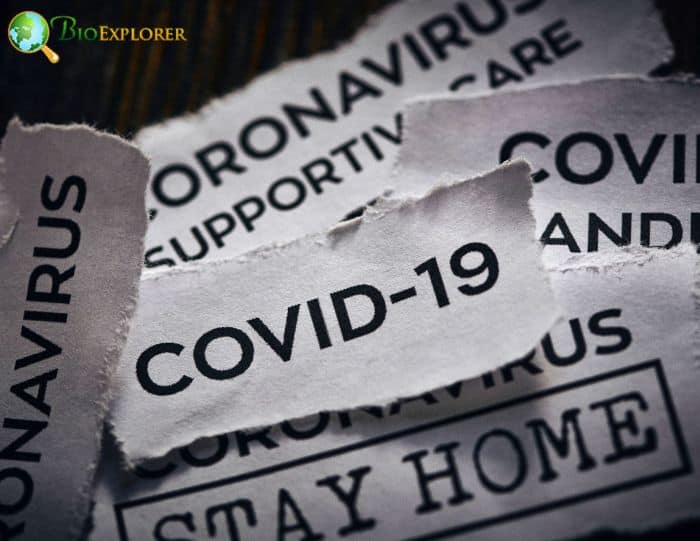
According to a recent study using human genetics,
To effectively treat COVID-19 in its early stages, clinical trials of medications that target two proteins should be given priority. In light of their analyses, the researchers recommend giving clinical trials of medications that target the proteins IFNAR2 and ACE2 priority. The aim is to identify existing drugs that can be repurposed for the early management of COVID-19, whether they are FDA-approved or in clinical development for other conditions.
-
According to researchers,
- IFNAR2 and ACE2 protein-targeting drug clinical trials should be given priority.
- The objective is to find existing medications that are either FDA-approved or being developed for other conditions in clinical trials that can be used for the early management of COVID-19.
- A class of medications known as PCSK9 inhibitors, which are used to lower cholesterol and prevent cardiovascular disease, target the protein. Studies demonstrating that individuals carrying a specific variant within the PCSK9 gene tend to have high cholesterol levels and are more susceptible to cardiovascular disease led researchers to discover that class of medications.
- A class of medications known as PCSK9 inhibitors, which are used to lower cholesterol and prevent cardiovascular disease, target the protein. Studies demonstrating that individuals carrying a specific variant within the PCSK9 gene tend to have high cholesterol levels and are more susceptible to cardiovascular disease led researchers to discover that class of medications.
- The ACE2 therapy APN01, which mimics the protein, is most effective against COVID-19. The medication works by tricking the coronavirus into attaching to it rather than the human cell’s ACE2 protein.
- Small clinical trials are demonstrating the effectiveness of APN01 in COVID-19 patients.
The study reveals global vaccination campaigns and medications for early-stage COVID-19 patients.
Suggested Reading:
Top 25 BEST Respiratory System Fun Facts
![]()
12. Researchers discover how genetic variations affect the control of blood cells’ genes (Germany, Sep 2021)

Significantly new information has been learned on the genetic control of blood cells. They could do this by looking at the largest dataset to date, which contained information on more than 31,000 research participants.
- Therefore, extensive investigation into how genetic variations affect the expression of genes in the blood has been carried out by the international eQTLGen Consortium.
- An important study finding was that 88% of all the genes examined had genetic regulators besides the gene.
- They are referred to as cis effects. The multiple cis and trans influences on gene expression that have been discovered provide a wealth of new explanations for the molecular links underlying various features and disorders.
- For instance, researchers discovered trans pathways resulting from the gene ZNF131 that controls the start of menstruation. These pathways have, in some cases, already been validated in the lab.
- Another illustration of this is a new mechanistic understanding of how the FADS1 and FADS2 genes affect fatty acid metabolism.
The findings considerably increase our understanding of how gene expression in the blood is controlled and go well beyond the data found in the world’s largest database to date, GTEx, and other databases that are currently accessible. We anticipate that this will help us comprehend genetic relationships better.
Suggested Reading:
Overview of Chromosomal Mutations, Types & Examples
![]()
13. Geneticists found a new DNA nucleobase biosynthesis pathway (France, May 2021)
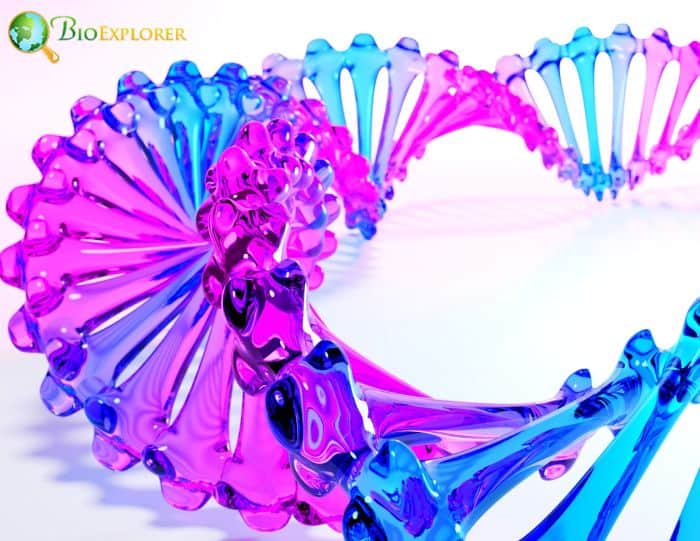
A, T, G, and C are the letters for the nucleobases that make up DNA. They are found in all living things and serve as the building blocks of the genetic code. However, a bacteriophage contains a different base, denoted by the letter Z. This one-of-a-kind exception has eluded researchers for a long time. Now, researchers have identified the base’s biosynthesis pathway.
- Deoxyribonucleic acid, or DNA, is a molecule all living things use to store their genetic information. It is a double helix with alternating pyrimidine and purine nucleobases (adenine and guanine) (cytidine and deoxycytidine).
- The centers of each DNA strand’s bases are joined by hydrogen bonds connecting the two strands. For example, Thymine and adenine form two hydrogen bonds (A-T), and guanine and cytosine form three hydrogen bonds (G-C).
- Except for one living thing, this holds true for all creatures. Cyanophage S-2L has a different base, i.e., 2-amino adenine, which completely replaces adenine in this phage (represented by the letter Z).
- Instead of the typical two hydrogen bonds between adenine and Thymine, the latter forms three bonds with Thymine (Z-T).
- Given its altered conformation and increased stability at high temperatures, DNA with higher bonds less readily recognizes proteins and small molecules.
- The enzyme responsible for this synthesis was mediated by succinoadenylate synthase (PurA).
The discovery of the biosynthesis pathway and the new Z-T base pair provided by this study demonstrate that new bases can be incorporated into genetic material enzymatically. As a result, DNA now contains more coding bases, opening the door to creating synthetic genetic biopolymers.
Suggested Reading:
History of Biochemistry
![]()
14. A study identifies genetic differences in COVID-19 and pneumonia risk (USA, Jan 2021)
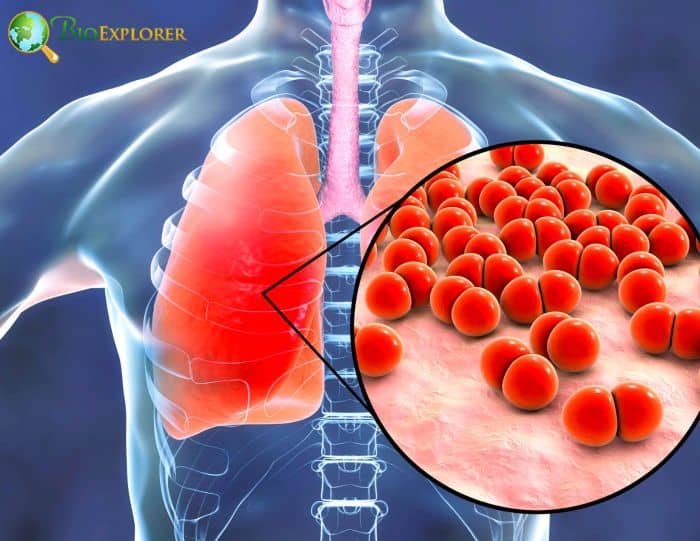
Genetic risk factors for pneumonia and its serious, potentially fatal consequences have been identified by researchers.
- This study is significant because we were able to pinpoint genetic risk factors that affect pneumonia susceptibility and severity in participants with Caucasian and African ancestry separately.
- More than 85, 000 patients with genetic data stored in VUMC’s BioVU biobank and health records that have been “de-identified“- stripped of personal identification information-were the subjects of genome-wide association studies (GWAS).
- GWAS can reveal links between disease and genetic variations. This time, they discovered a variation near a gene called UQCRFS1 in patients of African ancestry and one near a gene called R3HCC1L in patients of European ancestry connected to pneumonia.
- Although the molecular purpose of R3HCC1L is unknown, deletion of the UQCRFS1 in mice impairs a portion of their ability to fight infections.
This study identified the novel candidate genes R3HCC1L and UQCRFS1. It provided insight for further host genetic studies of COVID-19 because our knowledge of the genetic basis of pneumonia is still limited. In addition, this research may be used to pinpoint the people most at risk for developing severe pneumonia and create a targeted treatment plan for them.
Suggested Reading:
Top 14 Most Infectious and Deadliest Diseases Caused By Bacteria
![]()
15. New therapeutic target is discovered via genetic research on liver cancer (USA, June 2021)

Hepatocellular carcinoma (HCC), the most prevalent form of primary liver cancer and one of the nation’s top causes of cancer deaths, may be slowed down by medications targeting the MAGEA3 gene. A recent study examining the genetics of HCC tumors resulted in that result.
- Cancer testis antigens (CTAs), a gene family, were frequently overexpressed in the most aggressive parts of malignancies.
- CTAs are considered to perform spermatogenesis functions and shield germ cells from stresses and cell death. Most CTAs found on the X chromosome are expressed in male germ cells within the testes.
- The research team led by Villanueva discovered that CTAs, particularly MAGEA3, are linked to a poor prognosis in HCCs.
- When MAGEA3 expression was suppressed in isolated HCC cells, the cells lost their ability to grow and eventually perished.
- The mice that developed HCC more quickly when MAGE3 was overexpressed in their liver cells. It illustrates how MAGEA3 selective inhibition has anti-tumor effects in disease-related experimental models.
The study offers the proof-of-concept to evaluate MAGEA3 inhibition for patients with primary liver cancer in early-phase clinical trials.
Suggested Reading:
Explore The Top 8 Functions of Golgi Apparatus
![]()
From understanding the genetic basis of eye coloration to identifying rare diseases, genetics has proven to be a powerful tool in medical research. Genetic advances have also allowed researchers to develop a genetic framework that could potentially become a target for treating various diseases.
Furthermore, genetics has bridged the gap in understanding the risk factors of pneumonia and COVID-19, which could lead to more effective treatments and prevention strategies. With these remarkable developments as our foundation, we are excited to continue the momentum in the coming year.
The year 2022 holds great promise for further groundbreaking discoveries in genetics that could revolutionize our understanding and treatment of diseases.
![]()


